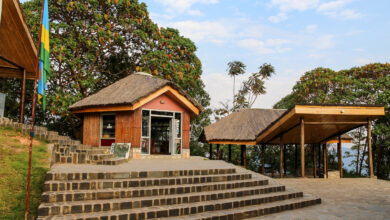Unveiling the Secrets of the Giza Pyramids: Ancient Engineering, Hidden Treasures, and the Legacy of Egypt’s Great Pharaohs”

Historical Overview of the Giza Pyramids
The Giza Pyramids are some of the world’s oldest and most iconic structures, dating back to the Old Kingdom of Egypt around 2580-2560 B.C.
Built by a series of pharaohs from Egypt’s Fourth Dynasty, these structures were designed to function as grand tombs, housing everything the rulers would need in the afterlife.
Constructed on the Giza Plateau near modern Cairo, the three major pyramids—built by Pharaohs Khufu, Khafre, and Menkaure—stand as testament to Egypt’s architectural prowess, spiritual beliefs, and devotion to the gods. Each pyramid is part of an extensive funerary complex that includes temples, causeways, and smaller queens’ pyramids.
Reference: History and Architecture of Ancient Egypt
Who Built the Giza Pyramids?
Pharaoh Khufu and the Great Pyramid of Giza
Pharaoh Khufu was the visionary behind the Great Pyramid, the largest of the three pyramids on the Giza Plateau. Built around 2550 B.C., Khufu’s pyramid once stood at an impressive 481 feet, constructed with an estimated 2.3 million stone blocks. Khufu’s construction efforts laid the foundation for Egypt’s legacy as a civilization capable of monumental architectural feats.
Khafre’s Pyramid and the Great Sphinx
Khufu’s son, Khafre, built the second pyramid around 2520 B.C., accompanied by the Great Sphinx, a massive limestone statue combining the body of a lion and the head of a pharaoh. The Sphinx, an enigmatic figure that likely served as a guardian of Khafre’s pyramid complex, has fascinated historians and archaeologists for centuries.
Menkaure’s Pyramid and His Burial Complex
The third and smallest pyramid, built by Khafre’s successor Menkaure around 2490 B.C., houses intricate burial chambers and unique architectural designs. The complex includes three smaller pyramids for his queens and features elaborate decorations, making it distinct among the Giza Pyramids.
Reference: Who Built the Pyramids of Giza?
Also Read: The Great Sphinx Giza, Egypt: The Hallmarks of Ancient Egyptian Civilization
Engineering Feats: How Were the Pyramids Built?
The construction of the Giza Pyramids required a combination of human labor, logistical planning, and advanced engineering techniques.
Archaeologists believe skilled Egyptian workers, supported by a temporary city with resources to sustain them, created the pyramids.
Remains of bakeries and bones indicate a well-nourished workforce, suggesting centralized state support for laborers.
Building Techniques and Architectural Innovations
Using copper tools, sledges, and levers, Egyptian workers carefully shaped and transported the massive limestone and granite blocks from quarries as far as Aswan, over 500 miles away.
Historical records from ancient papyri and archaeological digs reveal that the workers moved the blocks using boats along the Nile and a series of artificial waterways.
The Role of Worker Communities and Supply Networks
The centralized authority organized supply chains to bring in building materials and resources, enabling construction to proceed over multiple decades.
The Giza Pyramids were more than tombs—they were symbols of pharaonic power, a testament to the ability of a nation to mobilize resources and manpower on an unprecedented scale.
Reference: Building the Pyramids: Egypt’s Workforce
Construction Techniques and Theories
Theories on Stone Transportation and Ramp Systems
Scholars debate the exact methods used to transport the colossal stones. The most widely accepted theory suggests that ramps—possibly external zig-zag or spiral ramps—were used to move stones to great heights.
Other theories propose the use of internal ramps or a sophisticated sledge and roller system greased by water or clay.
Advanced Imaging and Future Discoveries
Recent advances in imaging technology, including cosmic ray scans, are revealing hidden voids and corridors within the pyramids.
Future discoveries may shed light on the precise construction techniques Egyptians used to erect these ancient wonders, unlocking secrets that have remained concealed for millennia.
Reference: Advanced Techniques Used in Pyramid Construction
Also Read: Pharaoh of Egypt: List of Pharoahs that Ruled Ancient Egypt
Life Around the Pyramids: A Glimpse Into Ancient Egypt
Tombs surrounding the pyramids contain art that reflects various aspects of daily life. These depictions show ancient Egyptians practicing agriculture, hunting, religious rituals, and even scenes of communal activities.
The artwork provides a unique lens through which to view life in ancient Egypt, showcasing how citizens interacted, worked, and worshiped.
Cultural Depictions: Agriculture, Religion, and Rituals
Tomb inscriptions give researchers insights into the religious practices and ceremonies central to Egyptian culture, including burial rituals believed to aid the journey to the afterlife.
Through these scenes, Egyptologists have decoded aspects of ancient Egyptian language, rituals, and social hierarchy.
Reference: Art in Egyptian Tombs
Discoveries That Continue to Amaze
New Findings by the ScanPyramids Project
The ScanPyramids project, initiated in 2015, uses modern scanning techniques to explore the pyramids’ inner structure without disturbing the monuments. This technology recently uncovered several voids and corridors, including a passage near the Great Pyramid’s Grand Gallery, sparking new debates about pyramid construction and purpose.
Preserving the Legacy of Giza Through Technology
The Giza Project, an expansive digital archive, preserves artifacts, tomb inscriptions, and structural layouts of the Giza Plateau. With Giza 3D, virtual visitors can explore the pyramids, temples, and tombs from anywhere in the world. This initiative ensures that the cultural heritage of Giza endures, accessible to all, while maintaining its physical preservation.
Conclusion: The Lasting Mystique of the Giza Pyramids
The Giza Pyramids continue to intrigue scientists, historians, and travelers alike. These ancient monuments, still standing after 4,500 years, capture the essence of Egypt’s historical grandeur and reveal a civilization that excelled in art, architecture, and governance. As new discoveries arise, the pyramids of Giza remind us that there is always more to learn about the past and the incredible ingenuity of humanity.





